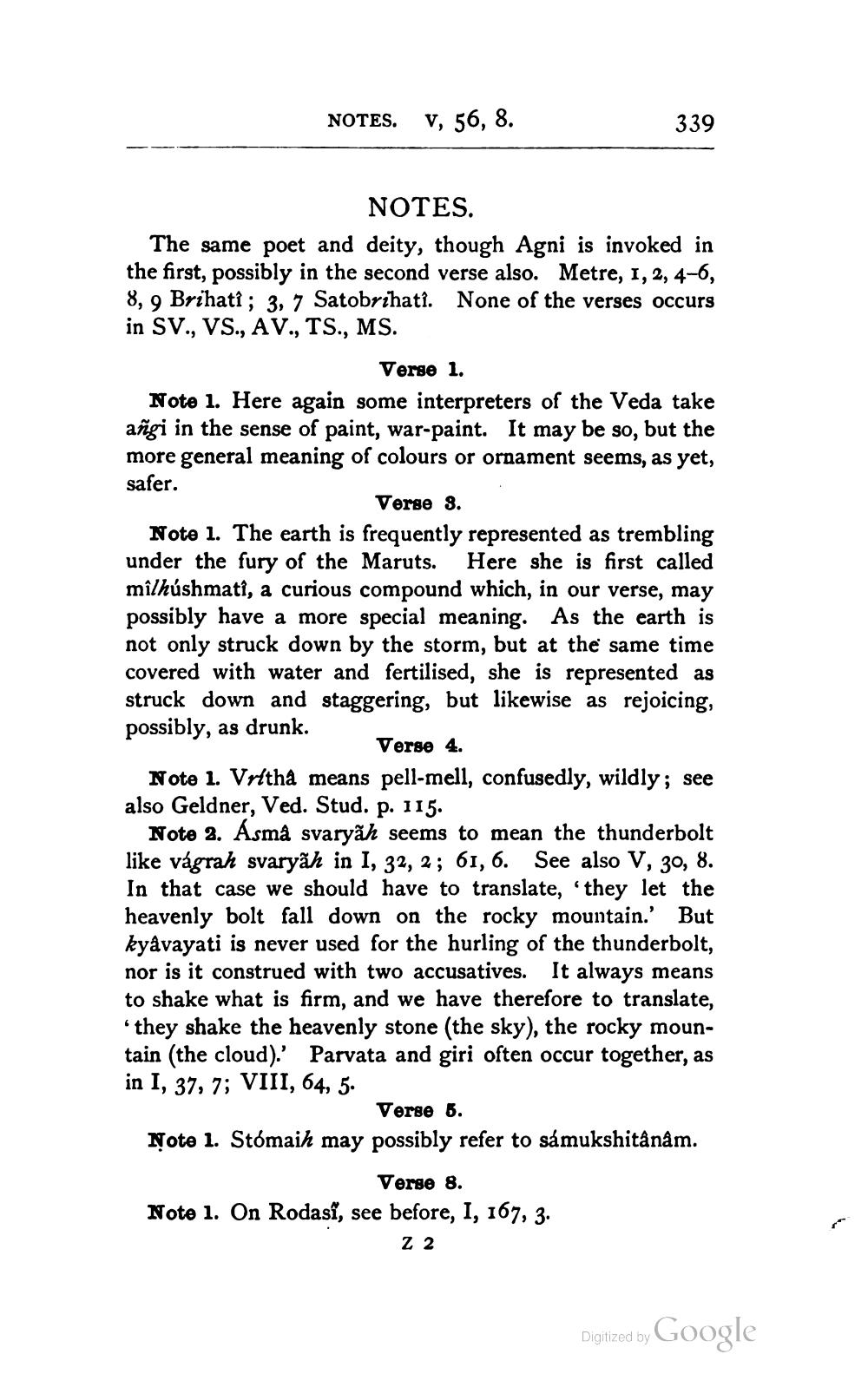________________
NOTES. V, 56, 8.
339
NOTES. The same poet and deity, though Agni is invoked in the first, possibly in the second verse also. Metre, 1, 2, 4-6, 8, 9 Brihati ; 3, 7 Satobrihati. None of the verses occurs in SV., VS., AV., TS., MS.
Verse 1. Note 1. Here again some interpreters of the Veda take añgi in the sense of paint, war-paint. It may be so, but the more general meaning of colours or ornament seems, as yet, safer.
Verse 3. Note 1. The earth is frequently represented as trembling under the fury of the Maruts. Here she is first called mîlhúshmati, a curious compound which, in our verse, may possibly have a more special meaning. As the earth is not only struck down by the storm, but at the same time covered with water and fertilised, she is represented as struck down and staggering, but likewise as rejoicing, possibly, as drunk.
Verse 4 Note 1. Vr/tha means pell-mell, confusedly, wildly; see also Geldner, Ved. Stud. p. 115.
Note 2. Asmå svaryảh seems to mean the thunderbolt like vágrah svaryảh in 1, 32, 2; 61, 6. See also V, 30, 8. In that case we should have to translate, “they let the heavenly bolt fall down on the rocky mountain.' But kyåvayati is never used for the hurling of the thunderbolt, nor is it construed with two accusatives. It always means to shake what is firm, and we have therefore to translate, 'they shake the heavenly stone (the sky), the rocky mountain (the cloud).' Parvata and giri often occur together, as in I, 37, 7; VIII, 64, 5.
Verse 6. Note 1. Stómaih may possibly refer to sámukshitânâm.
Verse 8. Note 1. On Rodasî, see before, I, 167, 3.
Z 2
Digitized by
Digilzed by Google




